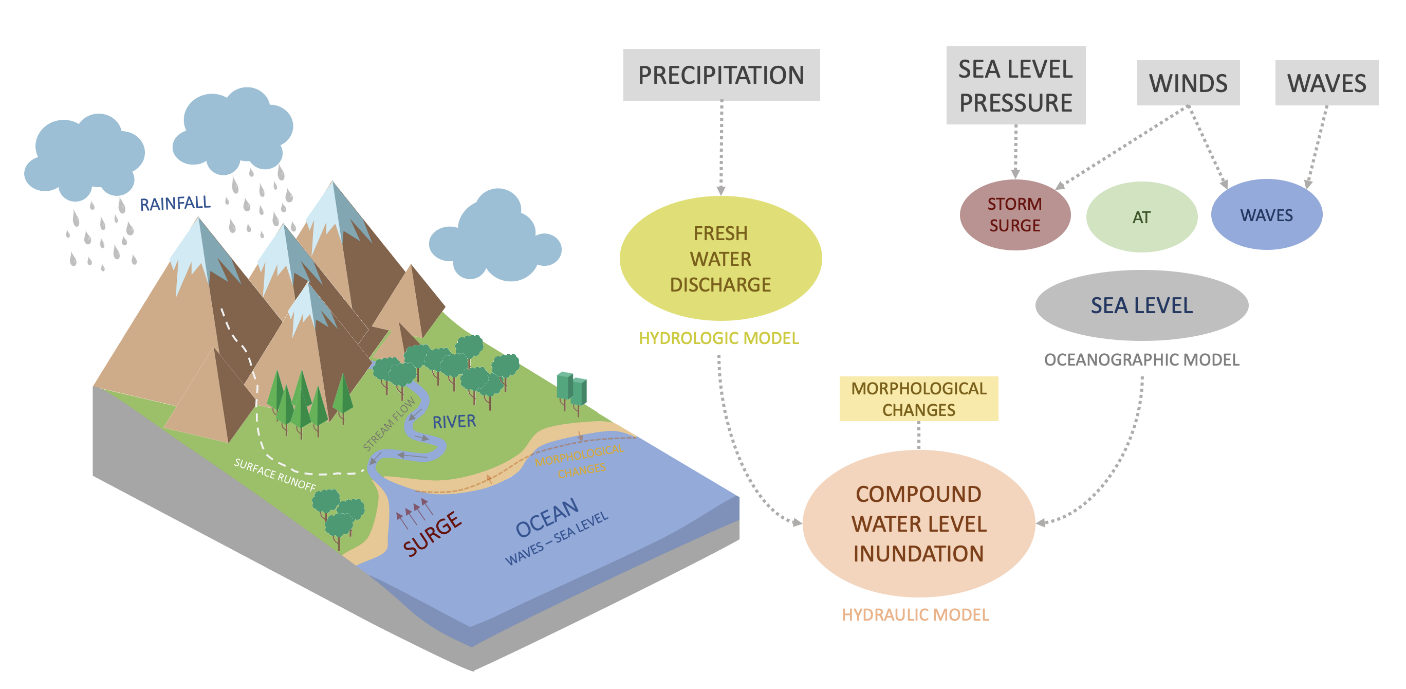INTRODUCTION
Coastal flooding is among the most dangerous and costly natural hazards. There are several reasons why the consequences of this hazard are so catastrophic. On the one hand, flooding events are often due to the interaction of multivariate drivers (compound events), such as precipitation, river discharge, tides, storm surges and waves, which are often caused by a common meteorological forcing and exacerbate the effects. On the other hand, the risk to human life is intensified by the fact that more than 50% of the population is concentrated in the coastal zone. Regarding climate change, flooding impact is greatly affected, firstly, because average sea-level rise directly increases the risk; secondly, the flooding drivers are also altered, e.g., the increase in the frequency and the intensification of extreme precipitation events. Besides, rapid erosion due to extreme storms or long-term erosion due to climate change trends, modifies the coastline altering compound flooding consequences making it necessary to incorporate morphological changes in the modelling process.
Therefore, the purpose of this project is to advance on the estimation of compound flooding at two spatial scales: regional and local, and two different time periods: short-term forecast and long-term projections of climate change, trying to open new climate services related with this impact and include socio-economic consequences to assess risk. This project proposes to develop new methods, tools and knowledge in order to:
- better characterize the Spanish coastlines in terms of their compound flooding drivers, impact and risk, to identify hotspots and driver combinations that are more likely to contribute to compound flooding;
- to model compound flooding at high-resolution, linking models using a very computational efficient approach to implement short-term predictions (0-72 hours ahead) and include the effect of climate change;
- to estimate and investigate compound flooding under short-term climate variability (extreme events) and climate change conditions by taking into account major morphodynamic changes.



